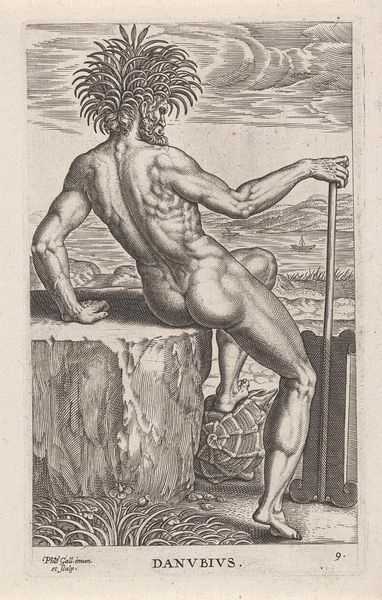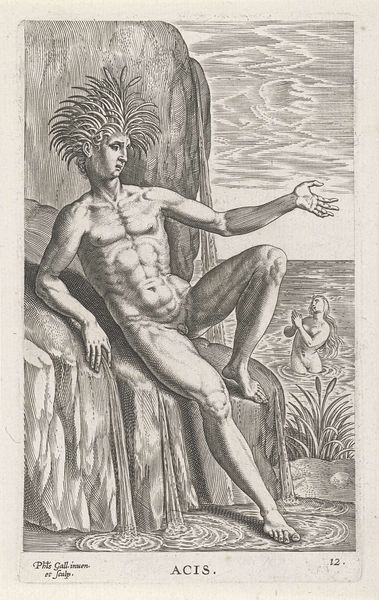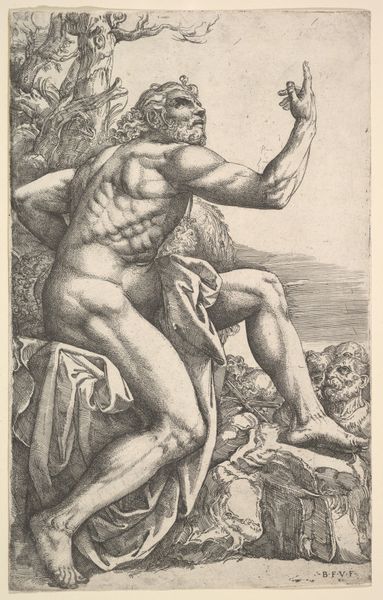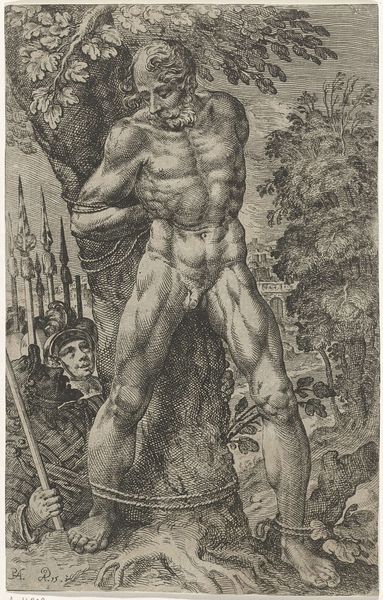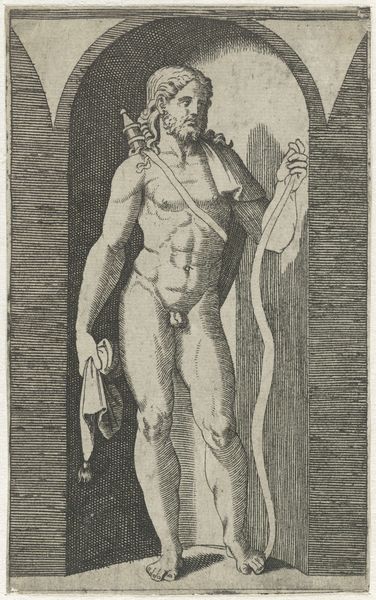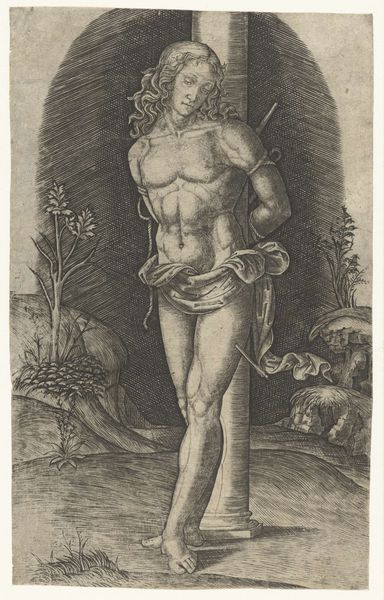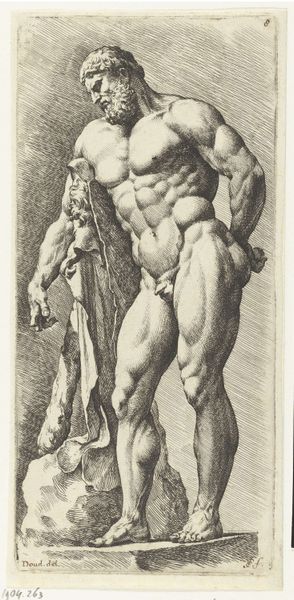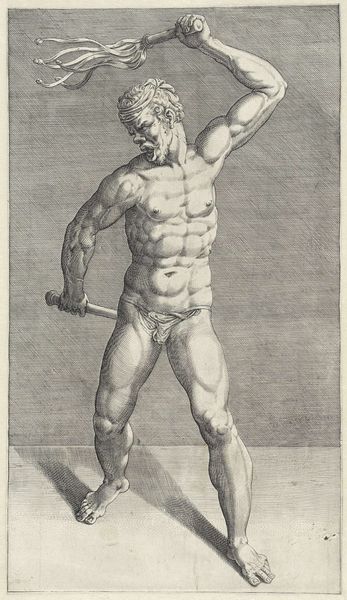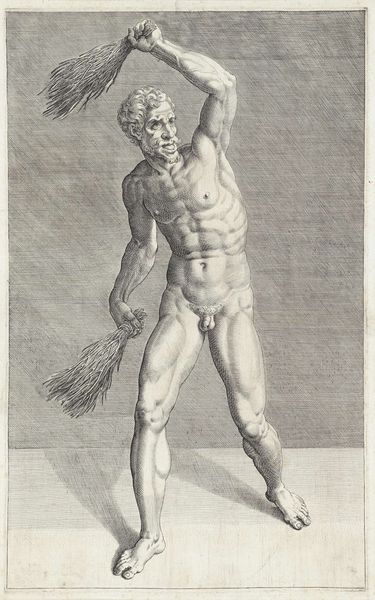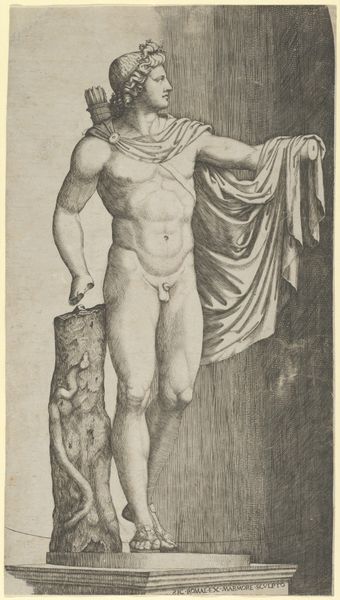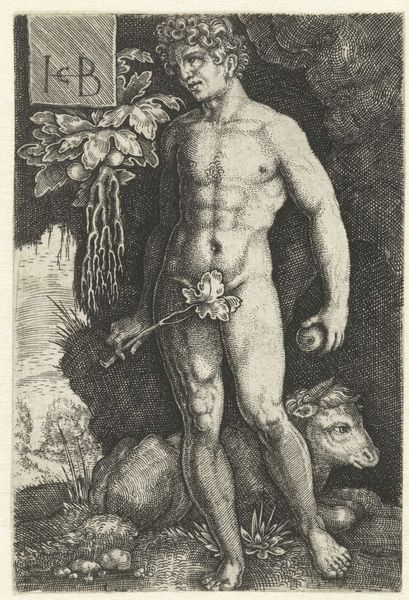
#
comic strip sketch
#
imaginative character sketch
#
light pencil work
#
pencil sketch
#
personal sketchbook
#
idea generation sketch
#
sketchwork
#
pen-ink sketch
#
sketchbook drawing
#
sketchbook art
Dimensions: height 165 mm, width 102 mm
Copyright: Rijks Museum: Open Domain
Curator: This image before us is entitled "Zeegod Achelous", created by Philips Galle in 1586. It's currently held in the Rijksmuseum's collection. What are your initial impressions? Editor: My first impression is the figure’s assertive nudity amidst a wild, watery landscape; it feels like a commentary on the raw power and vulnerability intrinsic in the natural world and our historical tendency to mythologize such forces. Curator: Galle was indeed tapping into classical mythology. Achelous was a Greek river god, often depicted in art with this type of physique and surrounded by water. His renderings reflect a Northern European interpretation of these classical themes, prevalent at the time. Editor: It’s striking how the artist depicts his command over water by pouring it out; however, it brings to mind the ongoing human struggle to control natural resources—and the damage it inevitably causes when hubris is involved. It definitely connects to our present-day concerns about ecological stewardship and questions of who has power over nature and access to water. Curator: Absolutely. Galle was working in a period of great change; printmaking played a vital role in disseminating these allegorical images throughout society. The positioning of Achelous—in control, powerful—spoke to the contemporary human ambitions of that period. Editor: Yet that very power raises questions about agency and responsibility, particularly from today's standpoint. It’s not enough to represent dominion; one must also ask: To what end? Is there justice? Who bears the consequences? Perhaps even Galle unconsciously invites those reflections. Curator: It's thought-provoking to consider such things through the prism of historical artwork. This depiction reflects humanity's long engagement with narratives of power, divinity, and the natural world. Editor: It compels me to revisit such classical works, bringing in contemporary analyses of social accountability. Perhaps by acknowledging the inherent contradictions and reflecting on art's function we will continue these much needed, and critical conversations.
Comments
No comments
Be the first to comment and join the conversation on the ultimate creative platform.


